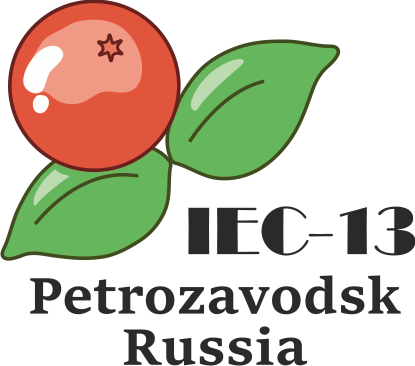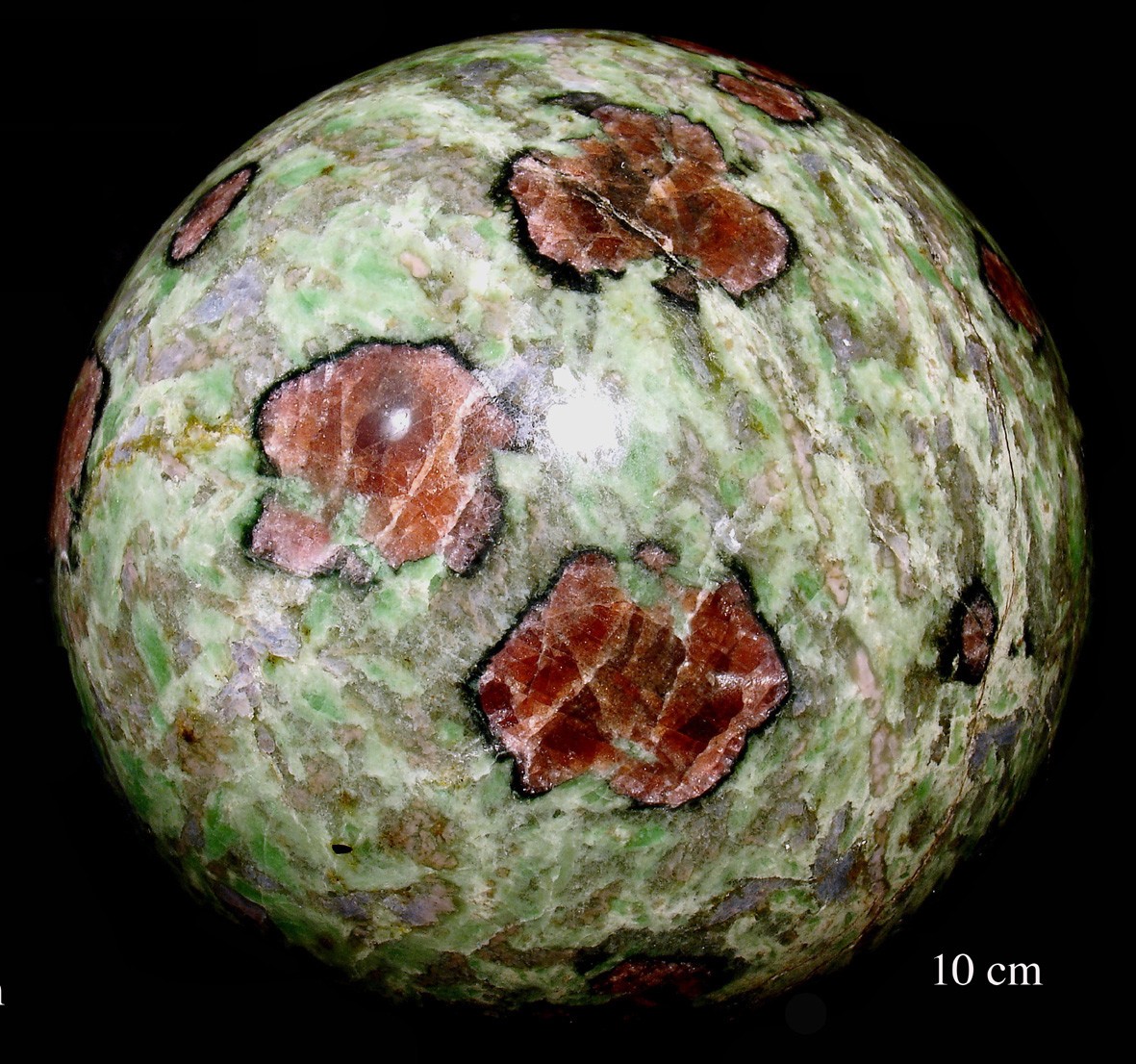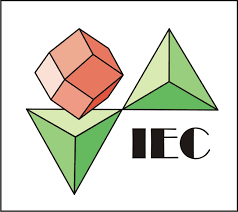
|
|
|
History of IECs
ECLOGITE:
2022 was chosen to coincide with the bicentenary of the creation of the word “eclogite” in 1822 by René-Just Haüy of the Muséum National d'Histoire Naturelle in Paris. This term was derived from the Greek word for "choice" (eklogh) since Haüy (1822) considered that this strange rock had "chosen to be different" from all other rocks, in particular by not containing plagioclase feldspar. Haüy is regarded by many mineralogists as the "father of crystallography", since it was he who established the important concept of the "unit cell". He also participated in the creation of the metric system.
When Haüy created the name "eclogite", he certainly did not realise that this rock will prove to be a "chosen" rock in more than one sense (e.g., Godard, 2001). During the two last centuries, eclogite contributed to the birth of major concepts of metamorphism, such as the "volume law" and role of pressure, the existence of metamorphic rocks deriving from igneous rocks, the widely used concept of mineral facies, the role of the coordination of aluminium cations in tetrahedral or octahedral polyhedral and the still enigmatic ultrahigh-pressure metamorphism. Eclogites have also been involved in several geodynamic theories, like the hypothetical existence of an "eclogite layer" in the mantle, and indeed the subduction of oceanic lithosphere, a concept born with plate tectonics in the 1960s.
BIRTH OF IEC CONFERENCES:
Because eclogite studies over two centuries have been exceptionally fruitful, it appeared useful to devote regular conferences to these rocks. Since 1982, International Eclogite Conferences (IEC) with excursions have been held regularly every 2, 3, or most often, 4 years, all round the globe, sometimes with an International Field Excursion in between:
- > 1st IEC-1982: Clermont-Ferrand, FRANCE
- > 2nd IEC-1985: Vienna, AUSTRIA
- > 3rd IEC-1989: Würzburg, GERMANY (FRD)
- > 4th IEC-1993: Cosenza, ITALY
- > 5th IEC-1997: Ascona, SWITZERLAND
- > 6th IEC-2001: Niihama, JAPAN

- > 7th IEC-2005: Seggau, AUSTRIA
- > 8th IEC-2009: Xining, CHINA
- > 9th IEC-2011: Marianské Laznê, CZECH REPUBLIC
- > 10th IEC-2013: Courmayeur, ITALY
- > 11th IEC-2015: Rio San Juan, DOMINICAN REPUBLIC
- > 12th IEC-2017: Are, SWEDEN
- > 13th IEC-2019: Petrozavodsk, RUSSIA
- > 14th IEC-2022: Lyon, FRANCE
The pre- or post-conference field excursions were usually held in the same country where eclogites, or assimilated high-pressure rocks, outcrop. Occasionally, the IEC participants travelled to an adjacent country (e.g., those involving the Bohemian Massif); IEC-1989, in particular, excelled in taking participants from Würzburg in Germany to the fantastic outcrops of low-T eclogites and blueschists on the Cyclades Islands in Greece.
The founding of first IEC in 1982 was conceived by integrating that there had never been an exclusively "eclogite" conference internationally. Research on eclogites up to 1982 had been rather "sleepy" for several decades, apart from a few key papers on the better-known eclogites in the Norwegian Western Gneiss Region, the Münchberger Gneiss Massif in Germany, the Bohemian Massif and the Western Italian Alps. However, research in eclogitology was now gradually becoming more active, following some discoveries of new localities and of new parageneses, especially those made by a new generation of Ph.D. students. However, language barriers restricted the dissemination of new scientific knowledge; for example, in the Anglo-Saxon world, little was known of the fine eclogites in countries like France, Spain, Italy and Greece, and even less of those in the USSR or China. Eclogites of Norway, Germany and Austria were better-known, thanks to a few papers published in English (e.g., Bryhni, 1966; Tilley, 1936). Thus, there was indeed a crying need for more international contacts, and this a long time before the appearance of Internet and email.
DEVELOPMENTS:
Some revolutionary petrological ideas were circulating, for example concerning the controversial exceptionally-high pressures deduced for the crystallisation of boudins of eclogites enclosed in gneiss within the Western Gneiss Region of Norway; these were the first indicators of ultrahigh-pressure metamorphism (UHPM) since the calculated peak metamorphic pressures were between 30-45 kilobars (Lappin & Smith, 1978).
Following the great development in Geology of the "New Global Tectonics" (e.g., Dewey & Bird, 1970), workers on the theories of Continental Drift, of Plate Tectonics, or of subductions, obductions or multiple nappe interdigitations, were beginning to elaborate ever-improved geodynamic models on how to create metamorphism at higher pressures than those that were generally accepted at the time, but that were extremely-pertinent to the origin of eclogites.
Experimental Petrology had developed new experimental equipment, like the piston-cylinder apparatus that allowed the synthesis of mineral assemblages at much higher pressures than before. Many experiments were being conducted to try to produce eclogite parageneses from gabbroic compositions (e.g., Green & Ringwood, 1967) and these created a great stimulus to studies of mineralogy at "normal" Upper Mantle depths that helped to explain what might happen during subduction. The key role of fluids was emphasised and thermodynamic approaches to modelling parageneses in Nature and in experiment were becoming more sophisticated (e.g., on jadeite + H2O stability by Holland, 1979).
Some new mineral species were beginning to be recognised by the IMA in well-preserved or amphibolitised blueschist- or eclogite-facies rocks (e.g., preiswerkite by Keusen & Peters, 1980; nyböite & Mg-Al-taramite by Ungaretti et al., 1981). Indeed, the nyböite chemical composition necessitated a complete overhaul of the inadequate pre-existing official IMA scheme for the classification of amphiboles, since it occupied a hitherto-unknown crystal-chemical domain (greater quantities of octahedrally-coordinated (Alvi) due to greater pressure and concomitantly lower quantities of tetrahedrally-coordinated (Aliv) due to the same greater pressure, i.e., the very "essence" of an eclogite (Smith, 1982). Likewise, some unusual mineral chemical compositions were being recorded (e.g., Fe-Mg-carpholite by Goffé, 1980) or unusual mineral associations (e.g., needles of quartz in omphacite, presumably exsolved from hypothesised "supersilicic clinopyroxene" in East Greenland: Smith & Cheeney, 1980). These peculiar mineral features were just the precursors of the "deluge" of novelties that was to come in the near future (see below). Thus, minerals in eclogites or related high-pressure rocks were beginning to contribute to a major revision of general concepts of high-pressure mineral stability and solid-solution ranges in general mineralogy and crystal chemistry.
Finally, in some English language publications, there were strong disputes about contentious petrographical declarations that needed clarifying: e.g., that "eclogites cannot contain hydrous minerals", or that "eclogites can contain plagioclase". Hence, there was an urgent need to discuss these matters globally.
Thus, the first IEC was launched, despite some risk since there was no financial support, and also no out-sourcing to help with organisation. Thankfully over one hundred participants from 23 countries came and their registration fees, and also fees for two excursions (French Massif Central and Western Italian Alps), solved the financial problem. First IEC also created certain criteria to be enshrined in its philosophical values in order to ensure the maintenance of a very high standard of scientific presentation and dissemination:
- > to be truly international, when there existed geopolitical forces favouring only national scientific events;
- > to have no parallel sessions, so that all participants could attend all presentations;
- > to cover all eclogite-facies rock types, of any chemical composition, and hence with a bit of a stretch to include garnet-lherzolites, whiteschists and blueschists;
- > to publish some of the submitted papers to the IEC in a special book and/or in a special issue of a reputed international journal;
- > to include at least one field excursion to exciting localities;
- > to create a governing body: IECCC (International Eclogite Conference Co-ordinating Committee) composed of one invited member from each major country, in order to plan, evaluate and survey future IECs.
A few aspects however did not survive in many later IECs:
- > to programme in some organised debates on key topics;
- > to pre-publish all the abstracts submitted to the IEC in an abstract journal (cf. Terra Abstracts, vol. 1., 1982).
DISCOVERIES:
 The success of the First IEC was subsequently proved by the strong common desire to keep going by organising further IECs, sometimes with competing offers to be decided by the IECCC. IECs certainly helped to accelerate research and the world-wide diffusion of knowledge in what could be termed "eclogitology" (e.g., Godard, 2001). Effectively, there were some "intellectual jumps" achieved by ground-breaking researchers when known minerals, but unknown in eclogites, were discovered in eclogite-facies rocks. First, there was coesite found in Italy (Chopin, 1984) and in Norway (Smith, 1984); those discoveries set into concrete the concept of the new sub-discipline of UHPM. Before long, discoveries of microdiamond, not only in eclogite or in garnet-peridotite (e.g., Sobolev & Shatsky, 1990; Vrijmoed et al., 2008) but also in so-called gneiss or granulite (e.g., Dobrzhinetskaya et al.,1995; Kotkova et al., 2011; Perraki & Faryad, 2014) hammered UHPM home to certain geologists reluctant to accept such high pressures. Then, in a spectacular way, the replacement of (Aliv) by (Alvi) was replicated by the replacement of (Siiv) by (Sivi), again due to higher-than-usual pressure, being recorded in the mineral majorite in peridotite in Norway (van Roermund et al., 2000).
The success of the First IEC was subsequently proved by the strong common desire to keep going by organising further IECs, sometimes with competing offers to be decided by the IECCC. IECs certainly helped to accelerate research and the world-wide diffusion of knowledge in what could be termed "eclogitology" (e.g., Godard, 2001). Effectively, there were some "intellectual jumps" achieved by ground-breaking researchers when known minerals, but unknown in eclogites, were discovered in eclogite-facies rocks. First, there was coesite found in Italy (Chopin, 1984) and in Norway (Smith, 1984); those discoveries set into concrete the concept of the new sub-discipline of UHPM. Before long, discoveries of microdiamond, not only in eclogite or in garnet-peridotite (e.g., Sobolev & Shatsky, 1990; Vrijmoed et al., 2008) but also in so-called gneiss or granulite (e.g., Dobrzhinetskaya et al.,1995; Kotkova et al., 2011; Perraki & Faryad, 2014) hammered UHPM home to certain geologists reluctant to accept such high pressures. Then, in a spectacular way, the replacement of (Aliv) by (Alvi) was replicated by the replacement of (Siiv) by (Sivi), again due to higher-than-usual pressure, being recorded in the mineral majorite in peridotite in Norway (van Roermund et al., 2000).
Just as exciting as those known minerals at new localities or in new mineral associations mentioned above, the pre-1982 indications of the potential of more stimulating discoveries of totally new mineral species (recognised by the IMA) or of unusual mineral chemical compositions expanded, if not exploded, with a wide variety of novel parageneses being reported in fresh or retrograded blueschist- or eclogite-facies rocks. Many of these came from several key regions that are now recognised as major UHPM domains: the coesite-eclogite province in the Western Gneiss Region of the Caledonide Orogen of SW Norway (reviewed in Smith, 1988); several parts of the Alpine Orogen of NW Italy or Switzerland (reviewed by Chopin & Schertl, 1999 and by Compagnoni & Rolfo, 2003); UHPM areas in Kazakhstan and in China have also yielded some unusual mineral compositions (e.g., Sobolev & Shatsky, 1990; Oberti et al., 2003; Shen et al., 2015). The following list of new mineral species or unusual mineral chemical compositions is no doubt incomplete (alphabetically by root name): bearthite, magnesio-chloritoid, davidsmithite, magnesiodumortierite, ellenbergerite, phosphoellenbergerite, lisetite, fluoronyböite, magnesio-staurolite, aluminotaramite, alumino-magnesiotaramite, fluoro-alumino-magnesiotaramite, OH-wagnerite; Ti-rich andradite, Ti-rich chondrodite, Ti-rich clinohumite, Na-eastonite, Na-gedrite, högbomite, Fe-Mg-rich margarite-paragonite s.s., uvite-dravite s.s.
These kinds of exciting discoveries in crystal-chemical petrology will hopefully continue to be presented and debated at an IEC, along with other inspiring developments, especially in the thermodynamics, geochronology or geotectonics of eclogites (cf. the new UHPM unit with a very young age and hence a very rapid exhumation of coesite-eclogite in New Guinea: Baldwin et al., 2008).
Since 1822, when Haüy (1822) only had a primitive monocular microscope and it needed a very perspicacious scientist like him to be able to observe, describe, deduce and discover all the things that he did in such conditions, research in the geosciences has never stopped moving into studying ever smaller domains, observable with more and more sophisticated apparatus like electron microscopes and microprobes, and Raman and other spectrometers, in order to try to elucidate the nature of processes and products in micrometre- or nanometre-scale domains in crystals. The results have thus been used to effectively renovate, if not to revolutionise, earlier ideas on the movements of kilometre- to megametre-domains like nappes and tectonic plates and the details of operation of subduction or exhumation processes. Despite the enormous progress in our understanding of eclogites, and these great technical advances, the mega-mystery of how these dense deeply-derived high-pressure rocks found their way up to lie in surface outcrops has constituted a driving force of our community's tireless research. We have still not yet arrived at a satisfactory consensus solution.
So please come to join us at IEC-14, in July 2022, to share your discoveries with everyone else, or to become intellectually-stimulated to go home and make some more. Better still, come to tell us your own new intellectual jump!


